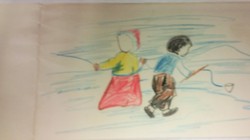Hi everyone,
Today as I scanned and named documents, I thought about how my work might affect a historian’s research. A decision or error that I might make in the process could later determine a researcher’s access to, or understanding of, certain information. I tried to be very careful in my steps because of this. Although making one mistake on one scan of one folder of one box about California water history may not necessarily transform a historical narrative, it was interesting to think of how information is recorded and preserved, and the effects that can have on the way we understand the past.
I haven’t found anything too fascinating this week because, again, the folder I was working on was full of business-related documents, but I’m keeping an eye out for cool details.
Best,
Aalia



